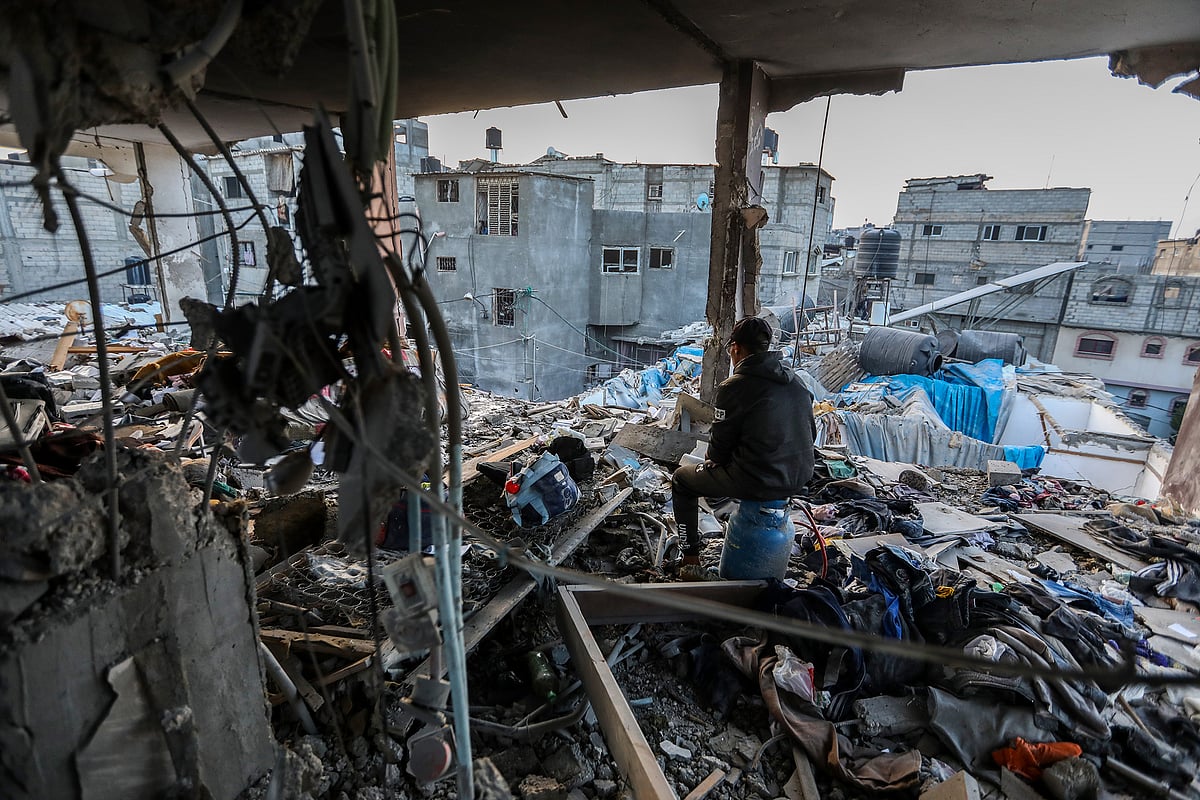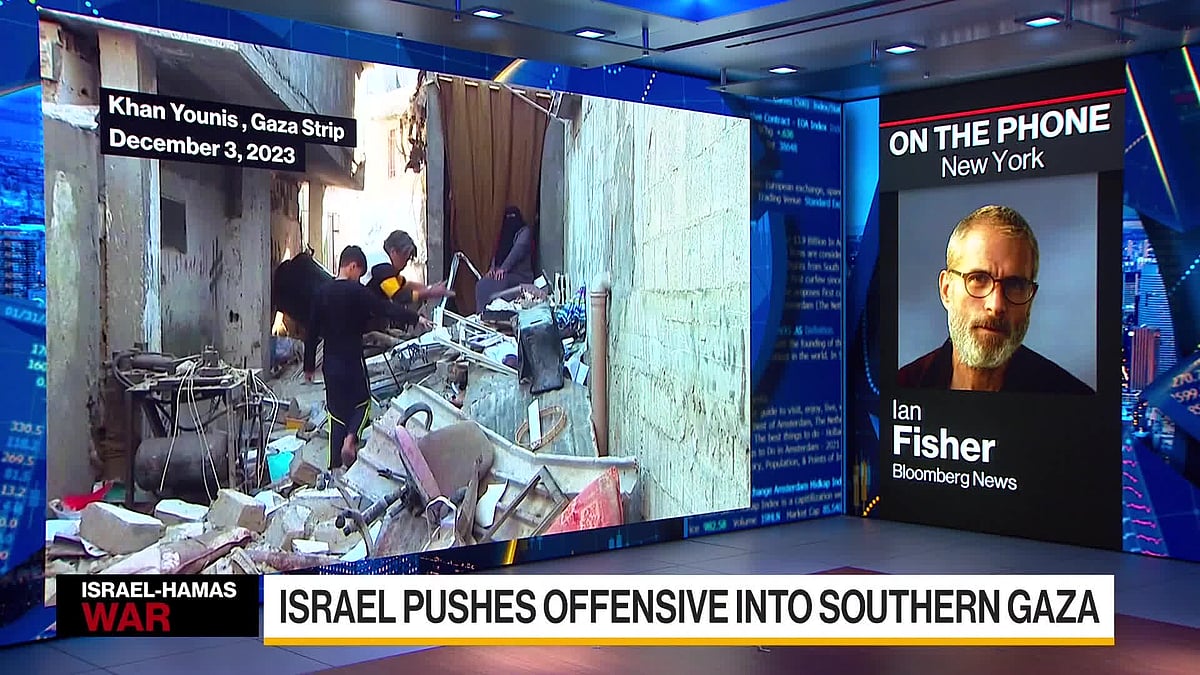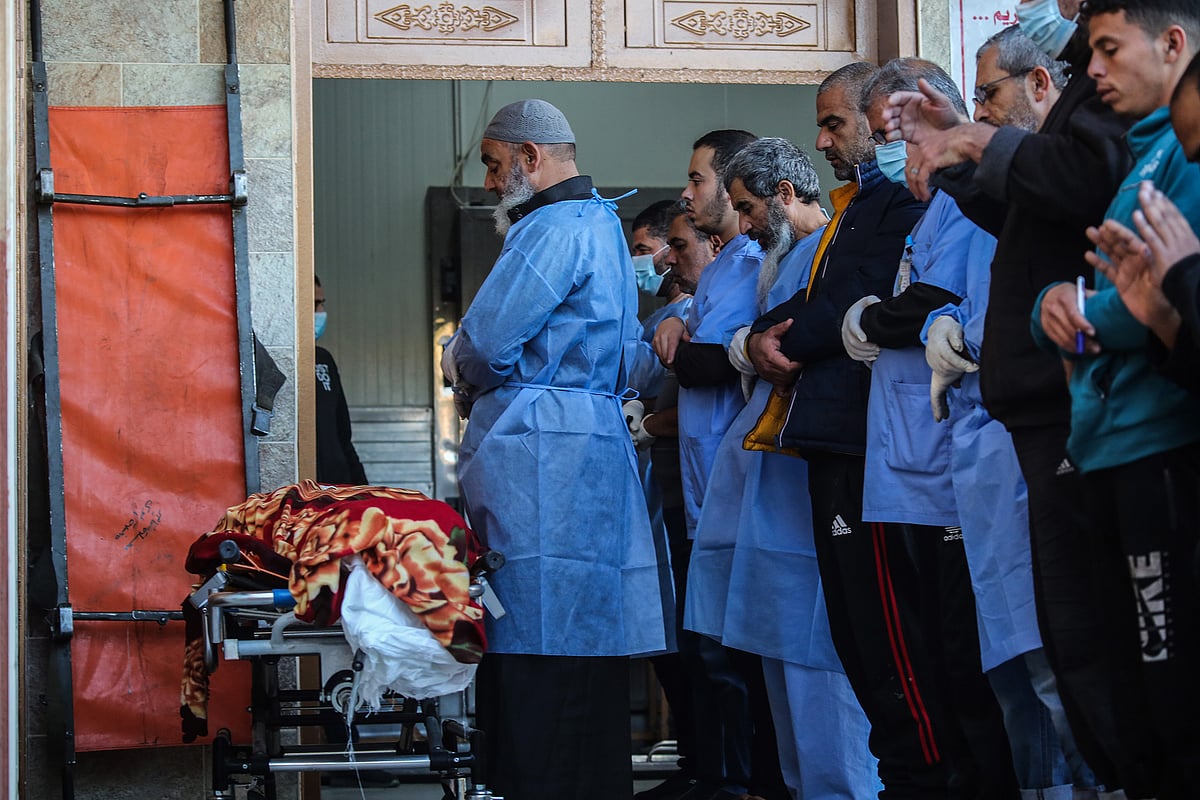Israel’s War Aims Move South With Hamas Leadership In Crosshairs
Israel’s a third of the way to its goal — destroying Hamas — and is launched on the next phase of bombing the south.

(Bloomberg) -- More than 100 hostages are free. At least 5,000 Hamas fighters are dead. Some 500 tunnel shafts have been destroyed. The Israeli military controls two thirds of northern Gaza. It’s a third of the way to its goal — destroying Hamas — and is launched on the next phase of bombing the south.
Eight weeks into its war on Hamas and days since a week-long cease-fire ended, that’s the Israeli government’s assessment of where things stand in its longest war since the 1948 War of Independence. It’s bearing down on the city of Khan Younis where it says the Hamas leadership is entrenched deep inside tunnels, telling Palestinian civilians to move to a set of nearby “no-target” zones.

To much of the world, all of that sounds too tidy when more than 15,000 Gazans — according to the Hamas-run health ministry — have been killed, large sections of Gaza City have been reduced to rubble and 80% of the 2.2 million inhabitants, most of them poor, are displaced. Numerous governments want Israel to end the war — which began on Oct. 7 when several thousand Hamas operatives killed and kidnapped hundreds of Israelis — by declaring a permanent cease-fire.
Even Israel’s biggest backer, the US, says that far too many civilians have died in Gaza from Israel’s 10,000 strikes over almost two months.

The US hasn’t, however, joined the call for a permanent cease-fire. Instead, it’s used its influence with the government of Prime Minister Benjamin Netanyahu to increase humanitarian aid into Gaza and create the system of “safe zones” to reduce civilian casualties as the next phase of the war begins. It’s trying to create diplomatic space for Israel to eliminate Hamas, which it designates — as does the European Union — a terrorist group.
“As far as toppling the Hamas regime is concerned, Israel has completed about 30% of the task,” said Amos Yadlin, a retired general and former director of military intelligence. “We still have a long way to go to achieve the goal of destroying Hamas, but sometimes there is a breaking point for the enemy, where the stopwatch starts to advance at a faster pace.”

Weeks to Months
This is also the view of a senior official who said that the ground operation in the north had gone better than Israel expected. The rest of the war should take somewhere between weeks and months — and Khan Younis will be key. Another official said the assault on Khan Younis, already begun and set to intensify this week, will be difficult and bloody.
Israel also has to overcome Hamas’s strategy in which survival is itself a victory. They’ve prepared for years for this kind of invasion on their own turf, and are waging a complicated defense both on the ground — as well as under it — and for world opinion.

Many abroad are highly skeptical of Israel’s strategy. French President Emmanuel Macron said in Dubai over the weekend that Israel’s aim of eliminating Hamas would require a decade of war. “So this objective must be clarified,” he added.
Within Israel, there is deep support for the war but plenty of worry. Ben-Dror Yemini, a conservative author and columnist, said by phone that thus far it’s been “a failed policy” because Israeli forces don’t fully control Gaza City or the tunnel network. As soon as the cease-fire ended on Friday, Hamas fired off some 250 rockets from northern Gaza, the most since the first day of the war. On Saturday night, a dozen missiles were fired at Tel Aviv, sending hundreds of thousands into shelters.
The senior official said the rockets were a result of Hamas replenishing and reloading its launchers during the cease-fire.
‘Hammer Strategy’
Yemini, who embraces the goal of destroying Hamas, worries that Israel is using too blunt a set of instruments — what he called a “hammer strategy” involving huge bombs from the air, causing many abroad to assail Israel.
“We need to think more about commando operations,” he said.
The fate of the rest of the hostages remains a concern, both politically in Israel and as a goal of the war. A deal in which Hamas freed women and children in exchange for many Palestinian women and minor prisoners in Israel, along with a pause in fighting and more aid for civilians, lasted a week. It ended when, according to Israeli and US officials, Hamas declined to free the remaining women it holds.
Hamas blamed Israel for the breakdown and said the women are of military age and in a different category. Israeli officials denied that and speculate that the women may have been abused in captivity, hence the hesitation to free them.
Hostage Worry
Hamas now holds mostly men of various ages, and whether they’ll be freed remains a topic of intense concern in Israel. Officially, freeing the hostages is co-equal as a goal of the war to destroying Hamas, but now that about half of them have been freed, the focus is turning again to combat which may endanger the hostages.
The government has argued that pressuring Hamas militarily actually leads to hostage releases, something that many abroad, including in the US government, doubted before the last deal.
Now that scores of hostages have been freed following intense military action, the approach has fewer critics, though families in Israel remain worried about their loved ones still in Gaza, and street demonstrations have begun seeking to push the hostage issue back to the top of the agenda.
Some of those released have offered valuable information on the location and well-being of those still held. They confirmed, for example, that at least half a dozen hostages were dead, their bodies in Gaza. This has played a role in shifting attention from hostage negotiations to military operations.
In Gaza, all this talk of strategy — along with a map Israel has published with numerous zones — is a matter of life and death. Residents say missiles are raining down on Khan Younis and evacuation orders suggest the entire city has to move south, to Rafah, where bombings are also reported.
The map is vague, the warnings unclear and the danger overwhelming, they say.
Myasser Zaher fled her home in Jabaliya, a crowded area in northern Gaza, last month, for her daughter’s house in Deir Al-Balah, in the south. The house is in a numbered area she said wasn’t under evacuation orders. Nonetheless, bombs fell on an adjacent house.
“We don’t know what to do or where to go,” she said by phone. “They divided Gaza into blocks and they still struck everywhere the same way.”
She fled to a nearby hospital.
“They are pushing us into one tight place,” she added. “This is not a life. A tent on the ruins of my house would be better than this displacement.”
--With assistance from Fares Akram and Galit Altstein.
More stories like this are available on bloomberg.com
©2023 Bloomberg L.P.